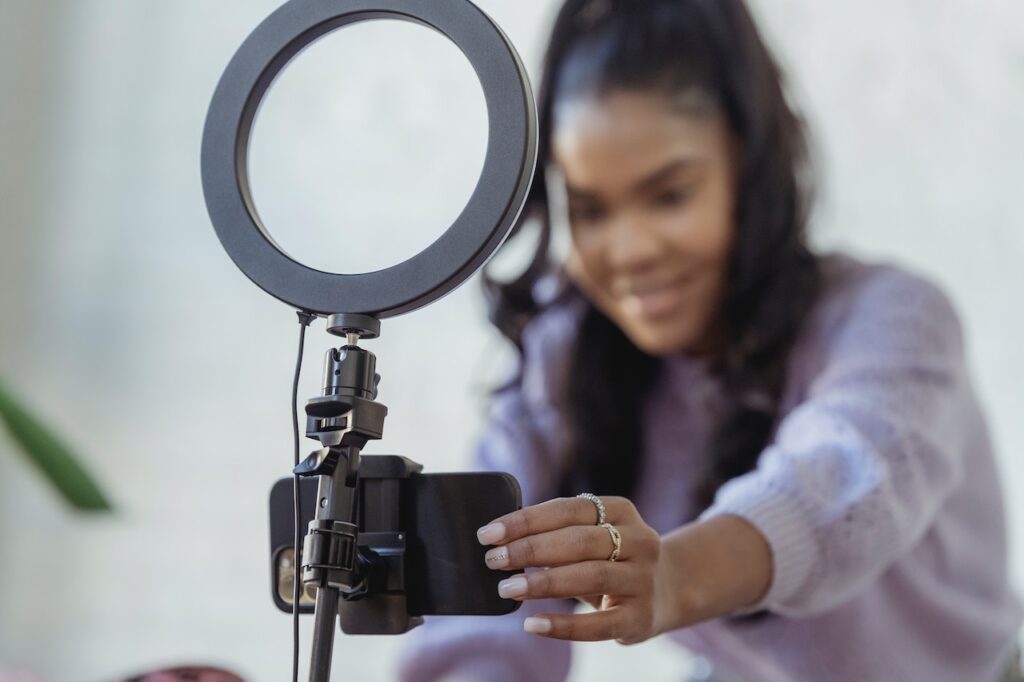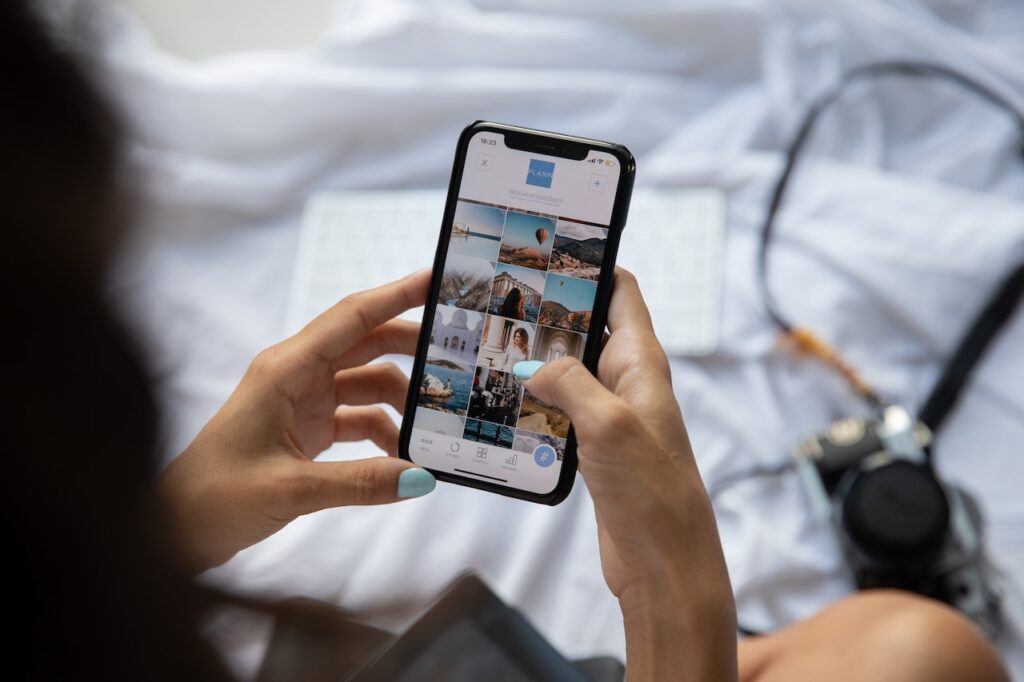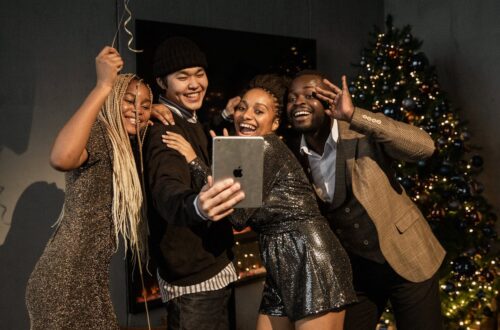In recent years, influencer marketing trends have become trending in business. This strategy’s power lies in harnessing the reach and impact of individuals who have already cultivated a dedicated following and a reputable online presence. By partnering with influencers, brands can tap into their influence and effectively promote their products or services to a vast and engaged audience, sometimes numbering in the millions.
What is Influencer Marketing?
To understand how influencer marketing works, it’s important to understand the concept of influence. Influence is an individual’s ability to persuade others and shape public opinion. An influencer has a unique platform that allows them to reach many people. This platform can come in many forms, including social media, blogs, and podcasts.
Through influencer marketing services in India, brands seek to leverage the influence of an influencer to promote their products and services. The process usually involves offering incentives such as free products or money in exchange for promotion.
10 Influencer Marketing Trends To Be Aware Of
1. Domination of Micro/Nano Influencers

The trend of Micro/Nano Influencers taking the lead in influencer marketing signifies a significant shift in strategy. In the past, mega-celebrity influencers held the spotlight, but now, the focus is on smaller-scale influencers who boast highly engaged, niche followings.
Micro-influencers have between 1,000 to 100,000 followers, while nano-influencers have even smaller audiences, often under 1,000 followers. The appeal of these influencers lies in their authenticity and relatability. Their followers perceive them as genuine and trustworthy, making them more likely to act on their recommendations.
As a result, brands are increasingly collaborating with these micro and nano influencers to create more targeted and effective campaigns, emphasizing building authentic connections with their audiences rather than mass appeal. This trend underscores the importance of quality over quantity in influencer marketing.
During the first half of 2023, most Instagram influencers in India belonged to the micro-influencer category, comprising more than 50 thousand content creators with follower counts ranging from 10 thousand to 50 thousand.
2. Instagram is the Top Priority For Influencer Marketing
Instagram is at the forefront of influencer marketing trends, acting as a bustling digital town square where people come together from all walks of life. It offers influencers a vast canvas to connect with diverse potential customers. With its visual-centric nature, Instagram is like a virtual shop window, making it the ideal platform for showcasing products and experiences that are visually appealing and relatable.
Visual-Centric Nature
Instagram is an inherently visual platform primarily focusing on images and videos. This aligns perfectly with influencer marketing, where visual content can showcase products or services effectively. The visual-centric nature of Instagram allows influencers to create engaging and visually appealing content that captures the attention of their followers and promotes brands seamlessly.
Massive User Base
Instagram boasts a massive and diverse user base, making it a valuable platform for influencer marketing. As of my last knowledge update in September 2021, Instagram had over one billion monthly active users worldwide. This extensive reach means that businesses can tap into a vast and varied audience through influencers who have followers matching their target demographics.
Stories and IGTV

Instagram offers additional features like Stories and IGTV, which further enhance its appeal for influencer marketing:
Instagram Stories: Stories are short-lived, immersive content pieces that allow influencers to provide real-time updates, behind-the-scenes glimpses, and quick promotions. These can effectively create a sense of urgency and connect with audiences personally.
IGTV (Instagram TV): IGTV enables influencers to share longer video content, such as tutorials, product reviews, or in-depth discussions. It provides a platform for more comprehensive brand storytelling.
3. Brands and Influencers Collaborate on Product Collections
Brands and influencers team up to craft their product collections. It’s a trend that’s taken the influencer marketing world by storm. So, how does it work? Picture your favorite influencer bringing their unique style and personality to the design table.
Whether it’s a clothing line, a makeup collection, or even a set of lifestyle products, the influencer pours their heart and soul into co-creating something that resonates with their followers.
Key Components of Collaborative Product Collections
To comprehend collaborative product collections fully, consider these key components:
- Co-Creation: Brands and influencers work closely in the creative process, from product design and development to packaging and branding.
- Shared Vision: Both parties share a common vision for the product collection, ensuring it aligns with the influencer’s brand and the brand’s identity.
- Unique Appeal: The product collection typically offers something unique or exclusive that resonates with the influencer’s audience.
- Promotional Campaigns: Collaborators engage in joint marketing efforts to launch and promote the collection, including social media posts, videos, and events.
- Limited Availability: These collections are often available for a limited time to enhance exclusivity and create a sense of urgency.
Benefits of Collaborative Product Collections
Collaborative product collections offer a range of benefits for both brands and influencers.
For Brands
- Audience Expansion: Access the influencer’s dedicated and engaged audience, which can increase brand exposure and potential new customers.
- Credibility: Gain credibility and trust by aligning with influencers already respected and trusted by their followers.
- Product Innovation: Leverage the influencer’s creative input to develop unique product offerings that stand out in the market.
- Market Insights: Tap into the influencer’s market insights and understanding of consumer preferences.
For Influencers
- Monetization: Earn income through product sales and brand collaborations, diversifying revenue streams.
- Brand Affiliation: Enhance their brand by associating with established brands and demonstrating their expertise.
- Authenticity: Maintain authenticity by co-creating products that genuinely resonate with their audience.
- Engagement: Foster deeper engagement and connection with followers through exclusive product launches and promotions.
4. Emphasizing Data and Tracking ROI

Let’s discuss the growing emphasis on data and tracking ROI (Return on Investment) in influencer marketing. It’s like sailing a ship – you need instruments to navigate. In influencer marketing, data is the compass, and ROI is the destination.
Importance of Emphasizing Data and ROI
Emphasizing data and tracking ROI offers several crucial benefits:
- Informed Decision-Making: Data-driven decisions are grounded in empirical evidence, reducing the risks associated with intuition-based choices.
- Efficiency Improvement: Identifying inefficiencies and areas for improvement becomes more straightforward when supported by data analysis.
- Cost Reduction: Tracking ROI helps identify underperforming initiatives, allowing organizations to reallocate resources effectively.
- Personalization: Data-driven insights enable businesses to personalize their offerings and marketing efforts, enhancing customer satisfaction and loyalty.
- Competitive Advantage: Companies that leverage data effectively can gain a competitive edge by responding swiftly to market changes and customer preferences.
- Risk Mitigation: Data analysis helps identify and mitigate risks, enabling proactive measures to avoid potential issues.
ROI Tracking in Different Business Areas
ROI tracking can be applied across various business areas:
- Marketing: Assess the ROI of marketing campaigns to determine which channels and strategies yield the best results regarding lead generation, conversion, and customer acquisition.
- Product Development: Evaluate the ROI of new product launches, considering development costs, sales revenue, and long-term profitability.
- Customer Service: Measure the impact of customer service investments on customer satisfaction, retention, and overall business performance.
- Employee Training: Assess the ROI of employee training programs by analyzing improvements in productivity, employee satisfaction, and reduced turnover.
- Technology Investments: Determine the ROI of technology investments, such as software or infrastructure upgrades, by comparing the costs to the efficiency gains or revenue increases.
Measuring ROI
Measuring ROI typically involves the following formula:
ROI (%) = (Net Profit / Cost of Investment) x 100
Net Profit: The revenue generated from the investment minus the initial investment cost.
Cost of Investment: The total amount invested in a particular initiative or activity.
5. Influencer Campaigns Will See a Greater Impact From Live Shopping
Recently, influencer marketing companies in India have seen the emergence of live shopping experiences, where your favorite influencer goes live on social media, showcasing products in real time and offering immediate purchasing options.
This interactive approach fosters a sense of connection and engagement that traditional e-commerce struggles to match. Notably, it’s not just about entertainment; it’s a powerful marketing tool.
Influencer marketing trends have evolved significantly over the years. Influencers are pivotal in showcasing products, addressing audience inquiries, and offering genuine endorsements, often in real time. This not only boosts engagement but also drives higher conversion rates.
However, the latest influencer marketing trend that’s gaining momentum is the advent of live shopping. Live shopping represents a dynamic evolution in influencer campaigns, promising a deeper impact and transforming how we engage with brands through trusted influencer voices.
6. Long-term Collaborations With Influencers

Let’s talk about the growing trend of long-term collaborations with influencers – it’s like nurturing a flourishing friendship rather than a fleeting acquaintance. In influencer marketing, short-term partnerships used to be the norm.
The Essence of Long-Term Collaborations
Long-term collaborations with influencers are characterized by a continuous and mutually beneficial relationship between a brand and an influencer. These partnerships extend beyond a single campaign or promotional activity and are built on trust, shared values, and aligned objectives. Here’s a closer look at the key aspects of such collaborations:
- Relationship Building: The focus is building a genuine and lasting connection between the brand and the influencer. This often involves getting to know the influencer personally, understanding their audience, and aligning brand values with the influencer’s content.
- Consistency: Unlike short-term campaigns, long-term collaborations are marked by consistent engagement. Brands work closely with influencers over an extended period, months, or even years.
- Content Integration: Influencers become an integral part of the brand’s marketing strategy, consistently creating content that aligns with the brand’s messaging and goals. This can include product reviews, sponsored posts, and authentic storytelling.
- Authenticity: Authenticity is a hallmark of long-term collaborations. Influencers authentically incorporate the brand’s products or services into their content, making it feel more genuine to their followers.
- Value Exchange: Both the brand and the influencer derive value from the partnership. Influencers receive compensation, products, or other incentives, while brands benefit from extended exposure, trust, and access to the influencer’s audience.
Industries and Use Cases
Long-term collaborations can be applied across various industries and for various purposes:
- Beauty and Fashion: Influencers can partner with cosmetics or clothing brands for ongoing product reviews, styling tips, and fashion partnerships.
- Fitness and Wellness: Fitness influencers can collaborate with health brands for extended partnerships, promoting supplements, workout gear, and health routines.
- Travel and Hospitality: Travel bloggers can collaborate long-term with hotels, airlines, and tourism boards, sharing their travel experiences over time.
- Technology and Gadgets: Tech influencers can work with brands to consistently review and showcase new products and innovations.
Success in Long-Term Collaborations
Success in long-term collaborations can be assessed using a combination of metrics, including:
- Audience Growth: Tracking the growth of the influencer’s audience over time.
- Engagement Metrics: Measuring likes, comments, shares, and other engagement indicators on sponsored content.
- Sales and Conversions: Monitoring the impact on sales and conversion rates attributed to the influencer’s promotions.
- Brand Sentiment: Assessing brand sentiment and perception changes among the influencer’s audience.
7. Brands Opt for Hyper-niching to Maximize Influence
Let’s explore a fascinating shift in influencer marketing strategy: brands are moving beyond traditional niches and embracing hyper-niching to amplify their influence. It’s like going from painting with broad strokes to crafting intricate details.
Key Elements of Hyper-Niching
To comprehend hyper-niching fully, consider these key elements:
- Precise Audience Definition: Brands engage in meticulous audience research to define a highly specific target group. This involves identifying demographics, psychographics, interests, behaviors, and pain points.
- Tailored Messaging: The messaging and content created by the brand are crafted to resonate deeply with the hyper-niche audience. This often involves language, references, and highly relatable visuals to the target group.
- Specialized Products or Services: Brands develop offerings that cater exclusively to the needs and preferences of the hyper-niche audience. These products or services are designed to address specific pain points or fulfill unique desires.
- Focused Marketing Channels: Marketing efforts are concentrated on channels and platforms where the hyper-niche audience is most active and receptive. This can include niche social media platforms, forums, or specialized publications.
Challenges of Hyper-Niching
While hyper-niching offers many advantages, it also comes with challenges:
- Limited Growth Potential: The audience within a hyper-niche may be limited, potentially capping the brand’s growth.
- Market Saturation: In some hyper-niches, competition among specialized brands can intensify.
- Niche Evolution: Niche audience preferences and trends may change, requiring brands to adapt.
- Resource Intensity: Crafting highly specialized products and content can be resource-intensive.
Measuring Success in Hyper-Niching
Success in hyper-niching can be assessed through various metrics, including:
- Audience Growth: Tracking the expansion of the brand’s hyper-niche audience.
- Conversion Rates: Evaluating the rate at which hyper-niche audience members become customers.
- Customer Retention: Measuring the longevity of customer relationships within the hyper-niche.
- Engagement Metrics: Assessing likes, comments, shares, and other engagement indicators specific to the hyper-niche.
- ROI: Determining the return on investment for marketing efforts targeted at the hyper-niche audience.
8. Paid Advertising Takes Center Stage

Paid advertising is becoming a superstar. It’s like giving your favorite actor the lead role in a blockbuster movie. In the day, influencer collaborations were all about genuine content and real connections. But now, things are shifting.
Brands invest more in influencer partnerships, treating them like important advertising campaigns. This means influencers aren’t just storytellers but brand advocates with a bigger stage. They use sponsored posts and promotions to reach a wider audience and create top-notch content that’s as good as traditional advertising.
This move gives brands more control, precise targeting, and measurable results like regular ads. So, in today’s influencer marketing world, paid advertising is stealing the show, proving how influencer marketing has become a star in mainstream marketing strategies.
9. Video Content Remains in a Thriving Boom
Video content, it seems, is experiencing a remarkable resurgence and continues to thrive. It’s as if video has reemerged as the reigning monarch of influencer content, commanding attention and making a lasting impact.
The Role of User-Generated Content (UGC)
User-generated content has become a driving force in the video content boom:
- Influencer Impact: Influencers and content creators use UGC on platforms like YouTube and Instagram to build loyal followings and influence consumer behavior.
- Authenticity and Trust: UGC often conveys authenticity and relatability, fostering audience trust.
- Community Building: UGC encourages community participation and interaction, allowing brands and creators to build dedicated fan bases.
Business and Marketing Implications
Video content is a cornerstone of modern marketing and brand communication:
- Content Marketing: Businesses use video to create informative, entertaining, and shareable content that drives engagement and brand awareness.
- Live Streaming: Live video events, webinars, and product launches are powerful tools for connecting with audiences in real time.
- Social Commerce: Video content is pivotal in the growing social commerce trend, where products are marketed and sold directly on social media platforms.
- Video Advertising: Platforms like YouTube and Facebook offer targeted video advertising options, allowing businesses to reach specific demographics effectively.
The Future of Video Content
As technology upgrades and consumer preferences evolve, the future of video content promises to be even more dynamic:
- Virtual Reality (VR) and Augmented Reality (AR): VR and AR technologies will enable immersive video experiences, transforming gaming, entertainment, and education.
- Interactive Content: Viewers will have more opportunities to engage with videos through interactive elements, personalized storytelling, and decision-driven narratives.
- AI-Driven Content: Artificial intelligence will play a significant role in video creation, from automated video editing to personalized content recommendations.
- Short-Form Video: The popularity of short-form video platforms like TikTok and Instagram Reels will continue to grow, influencing content consumption habits.
10. Influencer Podcasts Step into the Spotlight
Influencer marketing companies in India recognize that influencer podcasts are taking center stage as a compelling trend in content creation. Here, influencers, known for their expertise and authenticity, venture into the world of audio content, offering listeners a more intimate and immersive experience.
The Proliferation of Influencer Podcasts
Influencer podcasts are audio programs hosted by individuals with established credibility and a dedicated following in their respective niches. These podcasts provide a platform for influencers to share their knowledge, insights, and experiences, often in an informal and conversational style.
- Diverse Content Verticals: Influencer podcasts cover many topics, including lifestyle, health, technology, entrepreneurship, beauty, gaming, and more. This diversity caters to a broad audience spectrum.
- Accessible Platforms: Influencer podcasts are typically available on popular podcasting platforms such as Apple Podcasts, Spotify, Google Podcasts, and others. This accessibility makes them easily discoverable and consumable.
- Regular Release Schedules: Many influencers maintain consistent release schedules, regularly providing listeners with fresh content and fostering audience engagement and loyalty.
Influencer Podcasts and Audience Influence

Influencer podcasts wield significant influence over their audiences, impacting consumer behavior and decision-making:
- Recommendations and Endorsements: Podcast hosts often recommend products, services, or resources related to the podcast’s topic, influencing listener choices.
- Learning and Education: Listeners turn to influencer podcasts to learn, gain insights, and stay updated on trends within their areas of interest, which can drive informed decision-making.
- Building Communities: Podcasts can serve as community-building platforms, fostering connections among like-minded individuals and providing a sense of belonging.
Monetization and Business Opportunities
Influencer podcasts offer monetization opportunities for hosts, including:
- Sponsorships and Ads: Brands and advertisers often collaborate with influencers to sponsor podcast episodes or advertise, generating revenue.
- Affiliate Marketing: Podcast hosts can promote affiliate products or services, earning commissions on referred sales.
- Premium Content: Some influencers offer premium or exclusive podcast content behind paywalls, creating subscription-based revenue streams.
Final Thoughts
Influencer marketing is taking exciting new forms and redefining how brands engage with their audiences. From hyper-niching to sponsored video content and sponsored podcasts, this dynamic form of digital marketing continues to capture the attention of both consumers and brands alike.
As the influencer marketing trends evolve, brands will have more opportunities to craft impactful campaigns tailored to their audiences and objectives. Influencer marketing is here to stay – a testament to its transformative potential in the digital age.
FAQs
1. What are influencer podcasts?
Influencer podcasts are audio programs hosted by individuals with established credibility and a dedicated following in specific niches. These influencers share their knowledge, insights, and experiences through podcasting.
2. What topics do influencer podcasts cover?
Influencer podcasts cover many topics, including lifestyle, health, technology, entrepreneurship, beauty, gaming, travel, and more. The diversity of topics caters to various audience interests.
3. How can I find influencer podcasts to listen to?
Influencer podcasts are typically available on popular podcasting platforms such as Apple Podcasts, Spotify, Google Podcasts, and others. You can search for them by the influencer’s name or specific topics of interest.
4. What is the future of influencer podcasts?
The future of influencer podcasts is expected to involve content innovation, cross-media integration, the emergence of new niches, and a global reach. Influencers will continue experimenting with formats and storytelling techniques to engage their audiences further.
5. Can anyone start an influencer podcast?
Yes, anyone can start an influencer podcast, but having a niche or expertise in a specific area is important to build credibility and attract an audience. Having a unique perspective and valuable insights is key to podcasting success.





